Every week, AGENDA goes in search of the sound & vision of Brussels. This week we tune in on the harmony of discord at Kato Six’s studio.
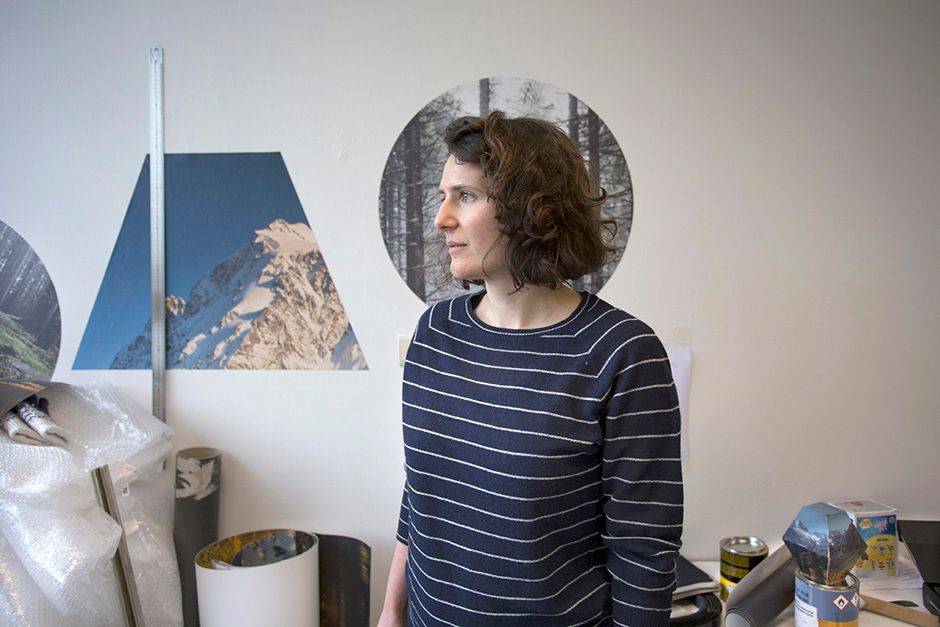
© Heleen Rodiers
Wunderkammer: Kato Six
The secret of good art lies in its humming. In the nearly imperceptible, yet – when seeping through to our lazy ears – persistent sound it makes. The sound of an invitation, of the inescapable feeling that you have witnessed something out of the ordinary, capable of reshaping the sweet routine and peaceful condition of our harmonious lives.
It is that hum that resounds ever so softly in the work of Kato Six (1986). By combining the recognisability of materials and forms (fake marble, Formica, reed, or concrete) with peculiar designs and settings (alienated or stripped of their functionality, and casting improbable shadows in fleeting dust), her objects and installations offer an experience of the space which, from the margins of the exhibition hall, ignites our collective memory, questions our way of looking at things, and reconfigures our understanding of our own spatiality.
Kato Six: “The fact that these objects are located in the margins of the space changes your experience of that space and of the interactions between the space, the works and you yourself as a viewer. It questions how the objects might even experience the viewers. This is something I have been thinking about more and more: all the things that I make, of which I thought I could decide what they looked like and what happened with them, actually affect and determine what I am able to do by the limitations of their materials and forms. I used to think of this relationship as one-directional, but it has since become clear to me that things are independent, form themselves, and grow. This is not only the case in my work, but everywhere.”
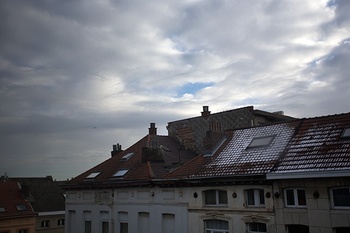
foto: Heleen Rodiers
It is striking that the objects that result from these interactions increasingly stir themselves and make themselves heard. While Kato Six’s first exhibition at c-o-m-p-o-s-i-t-e, “Re-located into Silence”, presented her objects as being given a new place in reality, this time the “Background Hum” can’t be ignored. “Everything is just as real, whether it exists as a drawing in my note book, evolves away from that first image or idea in my head, or actually already exists concretely… What is going on in the background and what is happening in the foreground? That is the question, and these relationships are constantly shifting. As people we have this idea that everything going on around us is in the background, but perhaps the opposite is true and we are the background to things.”
In the sober but enchanting theatre, in the staging of objects that Kato Six presents, props grow into characters, the sides of the space move centre stage, and the viewer becomes part of the scenery. You might compare it to the memory of a building and the fact that we are merely passing through. “Exactly. Isn’t it a remarkably strange idea that 200 years ago somebody from a different era experienced that very same building, and that conversely that building has been there all that time and knows so much?”
SHOW, DON'T TELL
All this results in a search for a kind of in-between state. Kato Six: “I would like to shake off that idea that everything needs to be parsed and polarised: material-immaterial, inside-outside, nature-culture. Everything moves constantly, it is always partly one thing and partly another. In that sense, you can’t even call it an in-between state. Perhaps that is what I am trying to accomplish in my work: to allow things to exist in their complexity. To show that and let people experience it.”
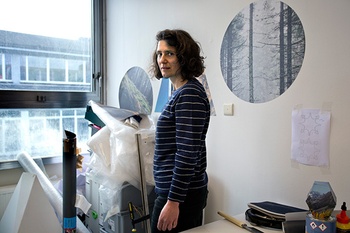
foto: Heleen Rodiers
The power of the work by the West-Flemish artist – who arrived in Brussels in 2012 for a residence at Wiels and now has a studio in one of the many rooms of the old post office in Sint-Gillis/Saint-Gilles – lies in its slow-burning character, in the steadily expanding room it takes up in our heads, and in the very present yet subtle discord that allows it to keep expanding.
“However rigid my work appears, however minimal and abstract it is, to me everything is produced very intuitively, it is a question of doing it. I don’t employ a consistent method. I am always groping around, exploring the borders of the two-dimensional and the three-dimensional, the material and the immaterial. How far can you go and still let something be something? When does it become something that you can’t relate to any more, or only in a very strange way? I can only hope that this sensitivity also affects the viewer.”
Perhaps words only damage that delicate sensitivity. “I find it very difficult to talk about my work. I prefer to show what I think. My works can easily speak for themselves.” Words may only exclude them as interlocutors. “Precisely! You deprive them of their voice.” Or rather: their nearly imperceptible yet persistent hum.
MOUNTAIN OF ALMOST NOTHING
One of the objects in Kato Six’s second solo exhibition at c-o-m-p-o-s-i-t-e is a “mountain” wrapped in a picture-perfect landscape. “I only went into the mountains for the first time a few years ago. But you don’t actually need to have been there, the image has nestled in our collective consciousness, like so many of the images and materials I use.”
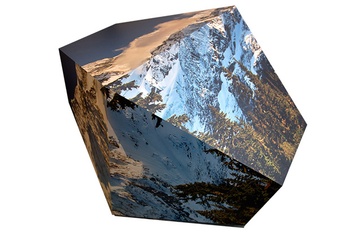
foto: Heleen Rodiers
Kato Six links the recognisability of the 1970s wallpaper to a form that exudes nothing like the reassurance of the familiar. “The image is very romantic, but also intangible. The form emphasises that: it looks almost designer, but you can’t do anything with it. In the exhibition, the mountain has a big shadow consisting of black MDF dust, projected on the wall through a stencil. The interplay of the material and the immaterial, the frailty of that dust, runs through the exhibition like a leitmotif. Blow on it and it’s gone.”
Photos: Heleen Rodiers
Borough: Sint-Gillis/Saint-Gilles
Exhibition: “Background Hum”: 29/1 > 5/3, c-o-m-p-o-s-i-t-e, www.c-o-m-p-o-s-i-t-e.com
Info: www.katosix.be
Wunderkammer
Read more about: Expo , Wunderkammer
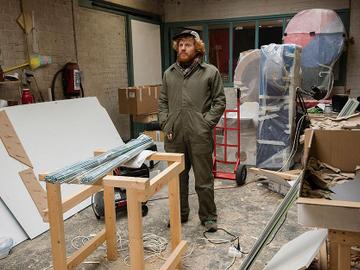

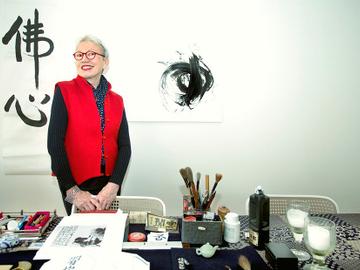
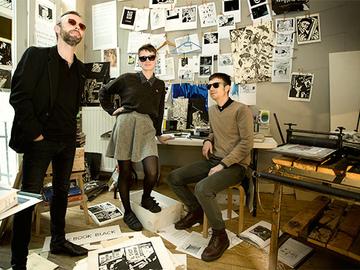
Fijn dat je wil reageren. Wie reageert, gaat akkoord met onze huisregels. Hoe reageren via Disqus? Een woordje uitleg.